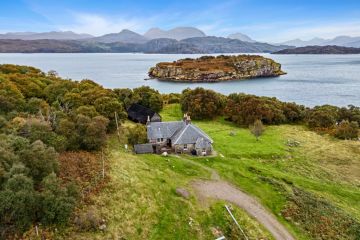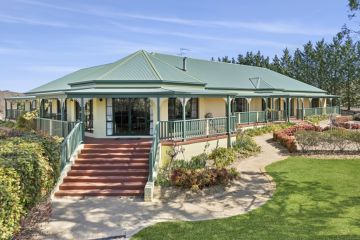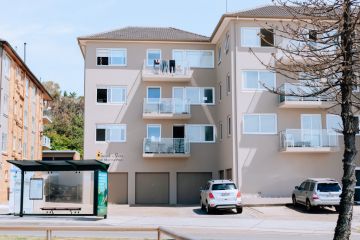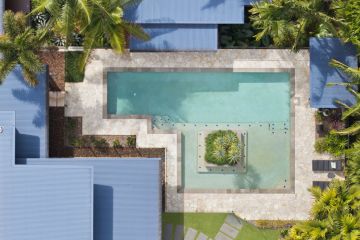Some of the world's priciest real estate floats on open waters - on a cruise ship
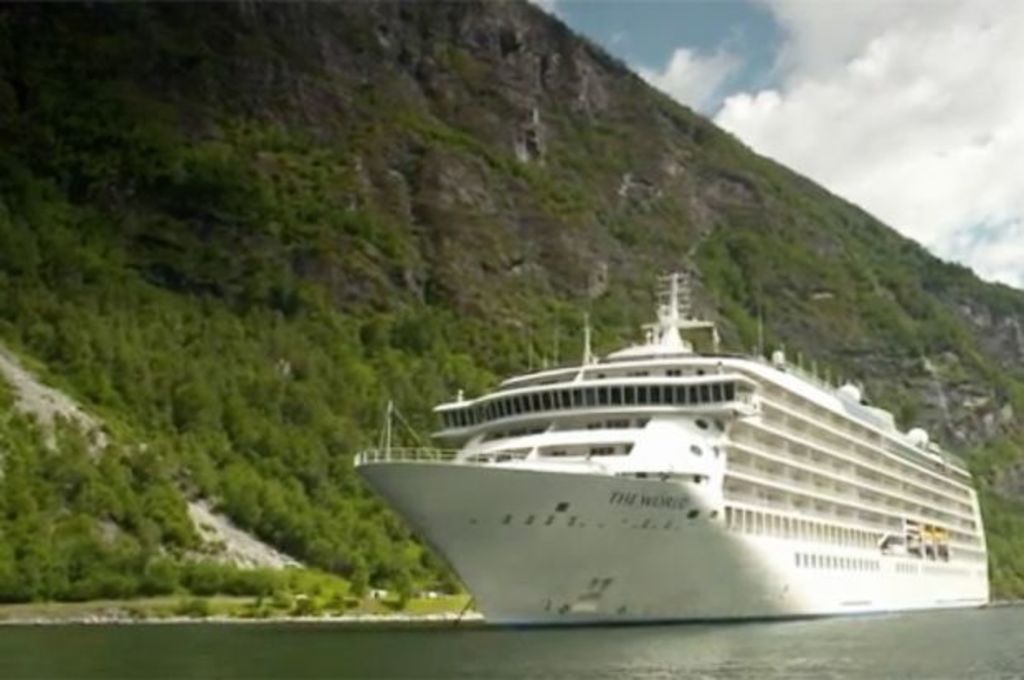
It’s among the world’s most-expensive real estate per square metre, where the oceanfront views never tire, and where the price of entry buys access to the otherwise inaccessible 165 apartments aboard The World, a condo cruise ship.
Its intensely private residents spend a third of the year, on average, gliding to the planet’s farthest reaches: Antarctica, Pacific atolls that haven’t seen a ship in two decades, and Ascension, a volcanic outcropping halfway between Africa and Brazil.
It took Trevor Rowe, chairman of Rothschild Australia, fewer than 72 hours to decide to buy a two-bedroom unit in 2012. At 129 square metres, the new home was a tiny nook compared with his expansive house in Sydney. Yet in terms of size it tops the price of real estate in some of the world’s most-expensive cities, including London and New York.
“I bought for the lifestyle,” Rowe, 73, tells us in an on-board interview in Vancouver, where the vessel recently docked. The son of a Perth bricklayer, Rowe’s fortune is self-made, like those of many of the vessel’s owners.
He accrued his wealth as an investment banker in Asia, New York, and Australia and estimates that he has visited Tokyo at least 40 times. “I’d been everywhere in my life but had seen nothing.”
The ship will cruise into New York in mid-December before heading to Miami to celebrate New Year’s Eve – a viewing opportunity for U.S. buyers of the dozen or so units up for sale. It won’t return to North America until at least 2020.
Ownership is restricted to those with at least $US10 million ($13.3 million) in assets, and potential buyers must gain the backing of two existing residents, pass background checks, and be ready to pay roughly $US900,000 a year in annual maintenance fees for the larger units. Once in, they gain admission to an exclusive club that golfs at midnight above the Arctic Circle, drinks Champagne among the world’s oldest sand dunes in Namibia, and stands at the rim of an erupting volcano in Vanuatu.
“Friends asked me how I got in – I still don’t tell them,” Rowe chuckles with a wink. Since he bought in, he’s been to Antarctica three times and counts the Galapagos, Machu Picchu, and the Russian Arctic among his most memorable adventures.
- Related: Most expensive house in the USA
- Related: The world’s most expensive homes
- Related: Elaine sets national price record
The residences start at 26 square metres and run up to about 325 square metres, with prices ranging from $US1.8 million to $US15 million. Prices of individual units aren’t disclosed publicly – although we were able to Google some sales brochures – but the above figures indicate an approximate range of $US46,124 to $US66,738 per square metre.
That tops the average square-foot price of luxury homes in Hong Kong, London, and New York.
Life Aboard
A vessel that would allow the wealthy to travel without ever leaving home was the brainchild of Norwegian shipping heir Knut Kloster Jr., whose father founded the company that became Norwegian Cruise Line Holdings Ltd. Built in Rissa, Norway, The World first set sail from Oslo in March 2002. The following year, the residents bought out the previous owners and took over the ship; 142 families have shares of a Bahamian company that owns the ship. The last original unit sold in 2006.
Amenities aboard would be familiar to those who’ve travelled on a smaller luxury cruise liner (or perhaps ever rented an entire one). Aboard the 12-deck, 196 metre vessel are two pools, a full-size tennis court, a golf simulator with an on-call pro, a Pilates studio, and a billiard table that’s cantilevered to accommodate the ship’s sway.
A wood-paneled library stocks leather-bound classics, and a full-size theatre offers lectures, including a recent visit by Shuji Nakamura, winner of the Nobel Prize in Physics in 2014 for inventing energy-saving LED lights. Residents can swing by the for-profit art gallery and grab a $US50,000 Picasso etching of a minotaur on their way to the 65-square-metre spa.
And, of course, there’s wine. The ship’s constant motion “isn’t great for cellaring, so it’s meant to be drunk,” says residential director Lisa Spiller of the 16,000-bottle collection. Owners have a roughly $US30,000 food-and-beverage allowance that’s included in their hefty annual maintenance fee, which can be spent at the vessel’s six bars and five restaurants.
“It’s the best of both worlds,” says Chris Scatliff, 74, who made his fortune building and selling technology and communications companies. Scatliff and his wife bought a three-bedroom residence in 2013.
The unit is one of the few that’s now up for sale. Having circumnavigated the world three times, Scatliff says he decided to place it on the market for a price that’s “somewhere in the middle” of that $US1.8 million-to-$US15 million range. But he’s in no rush to sell, nor has he lost the travel bug. “If somebody comes along and offers the right price, we might buy into something a little bit smaller.”
Ports of Call
The ship is in port or at sea 365 days a year, returning to dry-dock for repairs only every three years. In 2017, it will have visited more than 100 ports of call in more than 20 countries, starting in Australia, visiting East Asia, crossing to western Canada and Central America, and passing through the Panama Canal to end the year in Miami.
“You sail to places that you could never go to even on your own yacht,” says Scatliff, who owns a 21-metre yacht in the Bahamas and keeps a residence in Florida. “These experiences – you can’t buy them at any price.”
The behind-the-scenes logistics to support it all are mind-boggling. Unlike those of cruise ships that ply the same routes with regular suppliers, The World’s itinerary changes every year and is determined by owners through a vote held three years in advance. The planning process to scout vendors, arrange deliveries, and assess security can start more than a year ahead.
An entire level is dedicated to accepting provisions by air, ocean freight, and trailers. Vegetables still rooted in soil are stocked for longer sojourns at sea. A database keeps track of quirky owner proclivities – such as a preference for diced carrots, not chopped – cataloguing as many as 400 per resident.
Buying In
Approximately 20 per cent of residents own more than one unit, primarily to host family and friends, as guests are limited to the number of bedrooms in a unit. Over-hosting is frowned upon, as is serial lending of units among owners. Prospective buyers may, on being invited, rent a unit, starting at $US1,600 a night.
Officially, the owner community hails from 19 countries and is mostly aged between 55 and 65 years old, half from North America and a third from Europe. From observation, it’s predominantly Caucasian, with North Americans, Brits, and Aussies heavily represented. Among them are a Canadian media mogul, a Japanese hospital owner, and an American publishing baroness, though the fiercely private community abides by a rule not to disclose the names of owners to those who don’t belong to the club.
The owners jointly shoulder the cost of operating and maintaining the vessel and its 280 staff, which runs into the hundreds of thousands of dollars. The $US10 million net-worth test is to ensure that even in a downturn, the residents can shoulder the costs.
We recommend
We thought you might like
States
Capital Cities
Capital Cities - Rentals
Popular Areas
Allhomes
More
